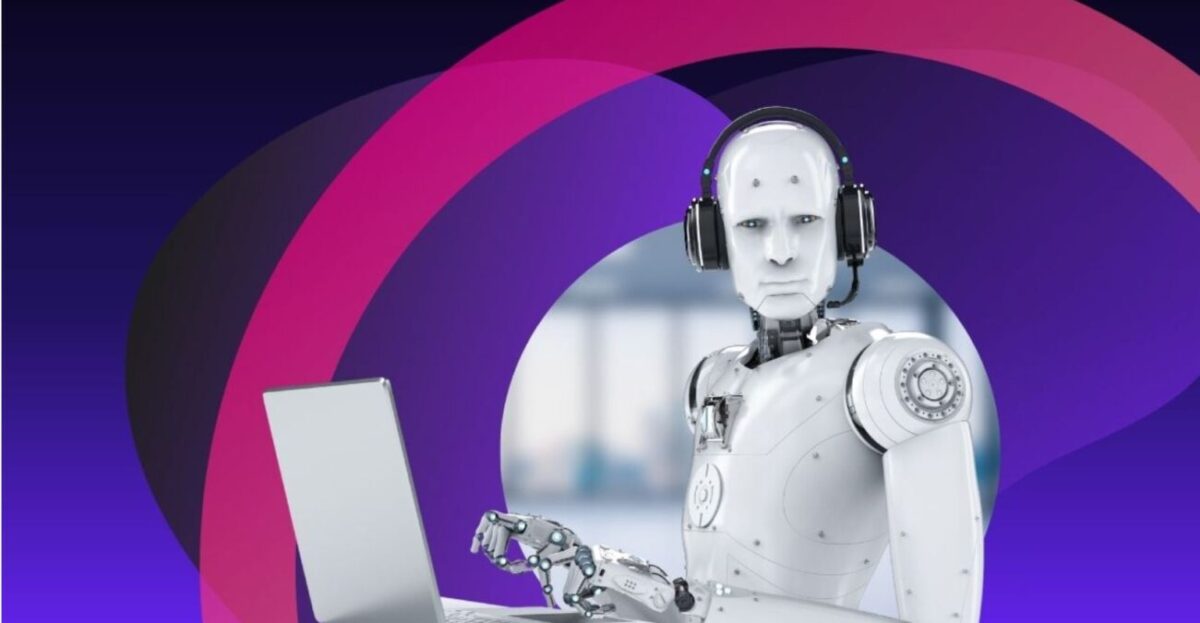
Sending one-size-fits-all newsletters and generic blasts is a thing of the past. These days, personalization is the name of the game, and AI email marketing strategies are making it happen.
AI email marketing is the use of artificial intelligence to automate and boost email marketing campaigns. It uses machine learning, natural language processing, and data analytics to enhance open rates and engagement.
This ultimate guide will explore the ways AI email marketing tools can help you grow your business with real-world examples and actionable tips you can apply to your brand. We’ll also tackle a few frequently asked questions about AI email marketing strategy.
Table of Contents
- Personalized Content Recommendations
- Predictive Analytics for Customer Segmentation
- Optimized Send Times
- Automated A/B Testing
- AI-Driven Email Copywriting
- Frequently Asked Questions (FAQs)
1. Personalized Content Recommendations
Offering personalized content recommendations to your audience is one of the most effective strategies to boost engagement through AI in email marketing.
In fact, data from Think With Google reveals that 90% of marketers believe personalization plays a crucial role in enhancing business profitability.
AI tools can allow you to analyze user data, including information from their:
- Past purchases
- Browsing history
- Engagement patterns
You can then use this data to create dynamic email content that feels tailor-made for each recipient.
Real-World Example: Booking.com’s Product Recommendations
An example of personalized email content marketing is Booking.com’s property recommendations.
I recently booked a hotel stay through the platform, and they sent me property recommendations that are close to the property I previously booked.
These recommendations are relevant to me as they’re within the location I’m likely to visit again, and they also fall within the ideal price point.
It goes without saying that this level of personalization ensures that the content is engaging to me and significantly increases the chances of conversion.
Applying it to Your Brand
Whenever there’s an opportunity to personalize your email content via AI (or any other tech, for that matter), go for it.
For ecommerce business owners, one such tool is Amazon Personalize – a machine learning service that allows business owners to boost their email marketing strategies through deep personalization.
Image Credit: Amazon Personalize
This tool uses data to generate tailored item recommendations and user segments based on users’ interactions with items or item metadata.
2. Predictive Analytics for Customer Segmentation
Predictive analytics uses historical data, statistical algorithms, and machine learning techniques to identify the likelihood of future outcomes based on past data. Simply put, it predicts how your customer will act based on their actions in the past.
Using AI predictive analytics for customer segmentation in AI email marketing means anticipating customer behaviors and crafting email content tailored to their needs.
This approach ensures that customers receive content that aligns with their preferences and behaviors, significantly increasing engagement and loyalty.
Real-World Example: Spotify’s Predictive Analytics
Spotify is one of the companies that leverages predictive analytics effectively to drive engagement.
I usually listen to music as I do deep work, and I’ve been on the hunt for tracks with sound signals that can help me improve focus and mask unwanted sounds.
After searching for such music on the platform, here’s one of the latest emails I received from Spotify:
The platform analyzed my listening habits and genres and offered personalized playlist recommendations that would most likely resonate with me, given my listening history.
Applying it to Your Brand
To incorporate predictive analytics into your brand’s email marketing strategy, start by analyzing customer interaction data across your platforms.
For instance, tools like Braze allow users to have live customer profiles and campaign interaction data to enrich messages.
Image Credit: Braze
The platform also features what it describes as “out-of-the-box” filters to reach the right subscribers.
3. Optimized Send Times
What time of the day do you usually open emails?
A study by Hubspot reveals that about a third of B2C marketers said the highest level of engagement occurs from 9 AM to 12 PM.
Despite these numbers, however, it’s crucial to note that research findings can vary, and consumer habits are constantly evolving. That said, it pays to employ AI email marketing tools that determine the optimal send times for each recipient.
How does it work? AI analyzes individual recipient behavior to predict when they are most likely to open their emails. The system then sends the email during the most probable time they would see the email, helping ensure that their message is acted upon rather than getting lost in crowded inboxes.
Real-World Example: Mailchimp’s Send Time Optimization
Mailchimp’s send time optimization feature uses AI to ensure emails land in inboxes at the most opportune time.
The platform’s AI algorithms sift through a user’s past interaction data, which includes open and click-through rates. Using this data, it gauges the best time for sending emails and creates a predictive model to forecast when the recipient is most likely to engage with an email.
With Mailchimp scheduling the emails when each recipient is most likely to open them, the platform increases the chances of engagement.
Applying it to Your Brand
Whenever possible, try to invest in tools that offer send time optimization and integrate it within your tech stack. It could also help to segment your audience based on demographics, behavior, and purchase history to refine send-time predictions.
It’s crucial to note that consumer behaviors change, so it’s vital to regularly review and adjust your send times based on ongoing analytics and AI insights.
5. Automated A/B Testing
A/B testing refers to conducting experiments to identify the most effective elements of an email campaign. As the name suggests, the process involves creating two or more variations of an email (A, B, etc.), where each version has a change in one variable.
Some of the variables you might want to change per version include:
- Sender name
- Subject line
- Message preview
- Salutation personalization
- Images
- Body
- Layout
- Call-to-action
- Send time
Here’s an example of email marketing A/B testing from marketing automation platform Omnisend:
Image Credit: Omnisend
Using AI technology, you can send different versions to segments of your email list to see which one works best depending on your chosen metrics.
Real-World Example: HubSpot’s Email Marketing A/B Testing
HubSpot’s A/B testing AI email marketing tool allows users to experiment with their sequence emails to see which version gets the best engagement and conversion rates.
The tool automatically distributes email versions evenly across an audience. For each version, it can track metrics, such as:
- Sends
- Open rate
- Clicks
- Replies
- Meetings booked
Image Credit: HubSpot
The platform encourages users to run tests until at least 100 contacts have received each version in order to ensure statistical significance. Testing one variable at a time is also best to get clear insights into factors that influence AI performance.
Applying it to Your Brand
Leverage AI-powered email marketing platforms that offer automated A/B testing capabilities, as these tools can handle the tasks you need to optimize your campaign, including:
- Distribution of email variations
- Collection of performance data
- Application of machine learning to predict outcomes based on historical data
You can also use AI tools to segment your audience based on factors like demographics, purchase behavior, and preferences. Through effective segmentation, you can test variables on groups that are most likely to respond favorably.
6. AI-Driven Email Copywriting
You can also use AI technology to write email copies for your campaign.
By analyzing data on consumer behavior, AI algorithms can create personalized and highly engaging email content that resonates with the audience. Many tools also offer tone variants, allowing users to customize the email according to their brand identity.
A word of caution, though – just as with AI graphic design, AI copies are based on algorithms and may miss the mark at times.
Real-World Example: Hoppy Copy’s AI Email Generation
Hoppy Copy is an example of an AI email generator that can create copy based on prompts. I tried creating email newsletters using this prompt:
I opted for the friendly tone, but the platform also offers other options, such as professional, casual, luxury, bold, witty, and more.
The platform generated several outlines, and I clicked Write All. It generated all the copies, complete with images.
Given that I only had to fill in the blanks on the prompt, the platform’s ability to generate a usable email copy and image isn’t bad. However, it’s crucial to note that the copy and image are generic and could surely be improved with a human touch.
Applying it to Your Brand
Test AI email generator tools that are designed to produce high-quality email content. To ensure that you’re offering valuable content to your audience, take the time to check your copy (and, if necessary, tweak it) to ensure that it sounds human and reflects your brand.
There are many paid tools that offer AI email marketing copies. However, if you don’t have the budget to spare and prefer free AI email marketing tools, you can always turn to free apps like ChatGPT and Copy.AI to craft an email copy based on your needs.
I tested Copy.AI’s free marketing email generator tool using this prompt:
Here’s the email copy it generated:
As seen from the example, AI tools are an excellent tool to generate an initial draft of your email copy. However, it’s essential to review and refine the content to reflect the message you intend to convey accurately.
Frequently Asked Questions (FAQs)
Here are a few frequently asked questions about AI email marketing:
How is AI used in email marketing?
AI can be used to enhance email marketing efforts by personalizing messages, predicting optimum send times, and optimizing content to increase chances of catching the audience’s attention. It can also be used to automate A/B testing and apply the insights in real-time.
What is the best AI for email marketing?
The best AI email marketing tool depends on your specific needs. However, it’s vital to note that many marketers go for platforms that offer advanced personalization, predictive analytics, and automation. It goes without saying the best AI for email marketing is one that aligns with your marketing goals, integrates seamlessly with your existing tech stack, and provides actionable insights to drive your strategy forward.
Can I use AI to send emails?
Yes, you can use AI to send emails, and it’s becoming increasingly popular among businesses looking to enhance their email marketing strategies. AI can automate the process of sending emails, personalize content for individual recipients, and determine the optimal timing for sending emails to maximize open rates and engagement.
Can AI replace email marketers?
No. Just as AI graphic design tools can’t fully replace human graphic designers, AI will not be able to replace email marketers. Even though AI can significantly enhance email marketing efforts, it can’t fully replace the creativity, strategic insight, and human touch that email marketers bring. Rather than replacing email marketers, AI can be a powerful tool that complements their skills, allowing them to focus on more creative marketing tasks while leaving data-driven functions to automation.
About the author

Carla Deña
Carla is a journalist and content writer who produces stories for both digital and legacy media. She is passionate about creativity, innovation, and helping small businesses explore solutions that drive growth and social impact.
Table of Contents
- 1. Personalized Content Recommendations
- 2. Predictive Analytics for Customer Segmentation
- 3. Optimized Send Times
- 5. Automated A/B Testing
- 6. AI-Driven Email Copywriting
- Frequently Asked Questions (FAQs)
- How is AI used in email marketing?
- What is the best AI for email marketing?
- Can I use AI to send emails?
- Can AI replace email marketers?










